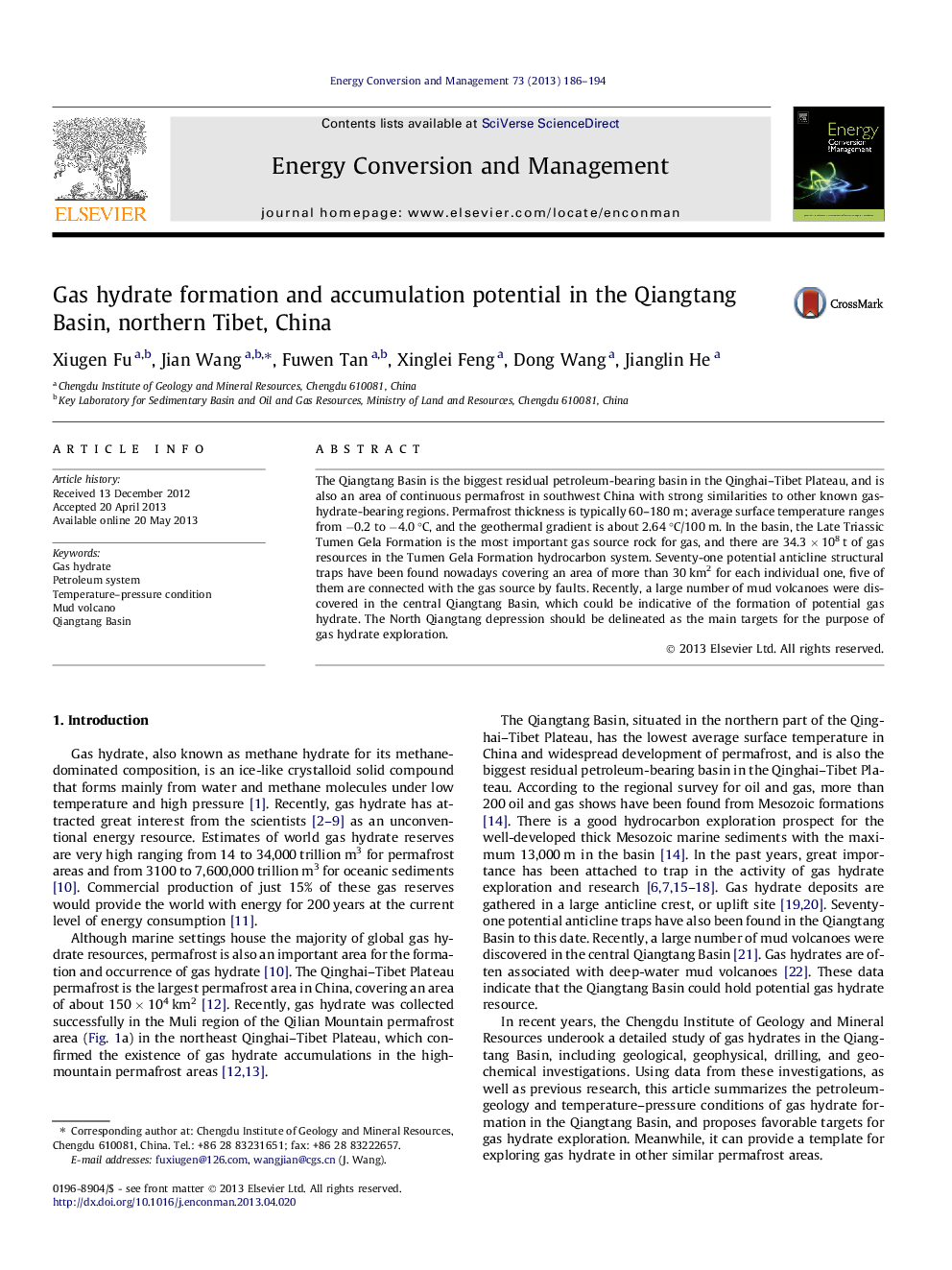| Article ID | Journal | Published Year | Pages | File Type |
|---|---|---|---|---|
| 764252 | Energy Conversion and Management | 2013 | 9 Pages |
•Qiangtang Basin is the biggest residual petroleum-bearing basin in Tibet Plateau.•The Late Triassic Tumen Gela Formation is the most important gas source rock.•Seventy-one potential anticline structural traps have been found.•A favorable geothermal condition for gas hydrate formation.•A large number of mud volcanoes were discovered in the basin.
The Qiangtang Basin is the biggest residual petroleum-bearing basin in the Qinghai–Tibet Plateau, and is also an area of continuous permafrost in southwest China with strong similarities to other known gas-hydrate-bearing regions. Permafrost thickness is typically 60–180 m; average surface temperature ranges from −0.2 to −4.0 °C, and the geothermal gradient is about 2.64 °C/100 m. In the basin, the Late Triassic Tumen Gela Formation is the most important gas source rock for gas, and there are 34.3 × 108 t of gas resources in the Tumen Gela Formation hydrocarbon system. Seventy-one potential anticline structural traps have been found nowadays covering an area of more than 30 km2 for each individual one, five of them are connected with the gas source by faults. Recently, a large number of mud volcanoes were discovered in the central Qiangtang Basin, which could be indicative of the formation of potential gas hydrate. The North Qiangtang depression should be delineated as the main targets for the purpose of gas hydrate exploration.
